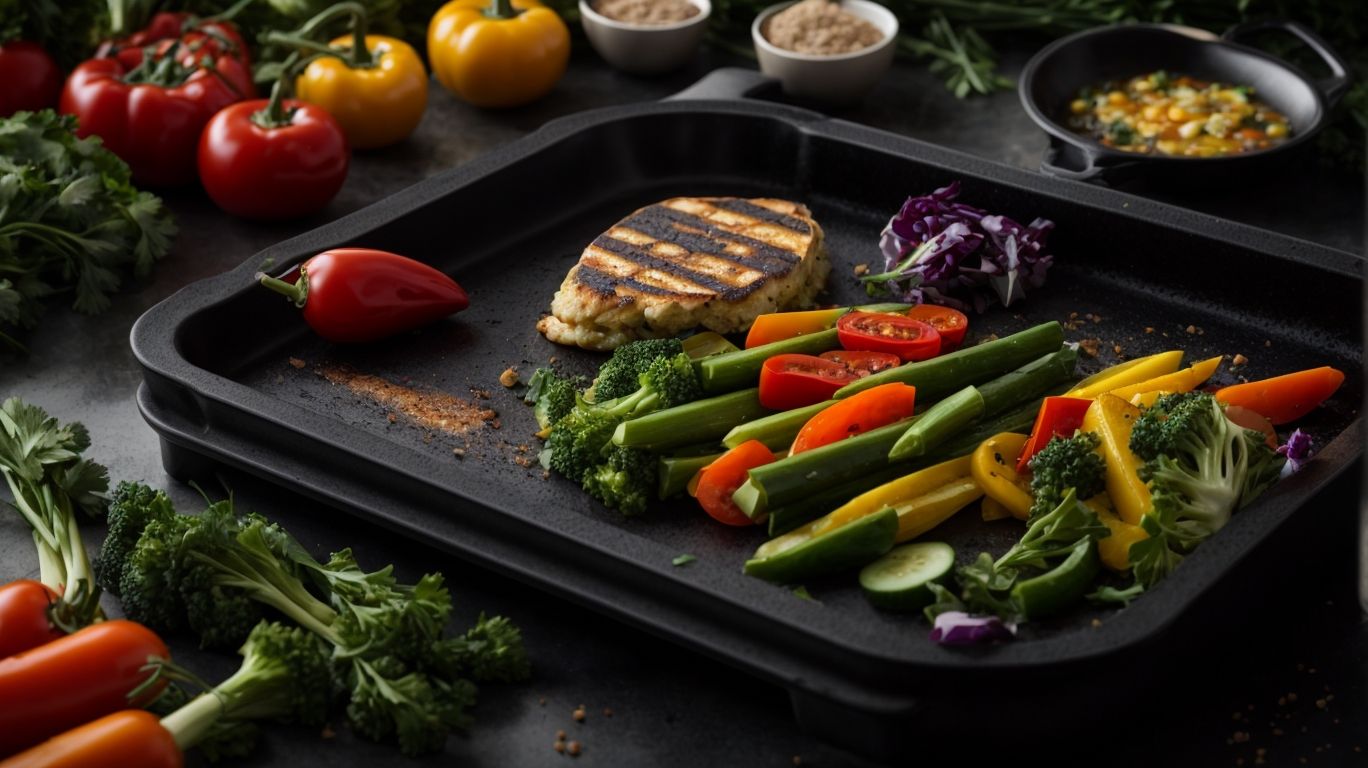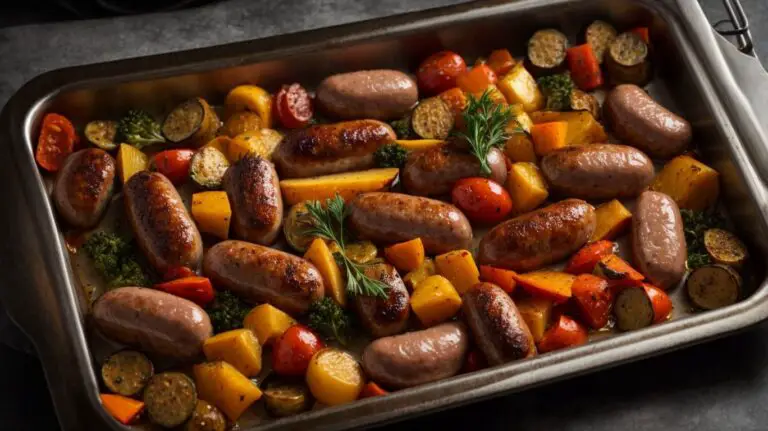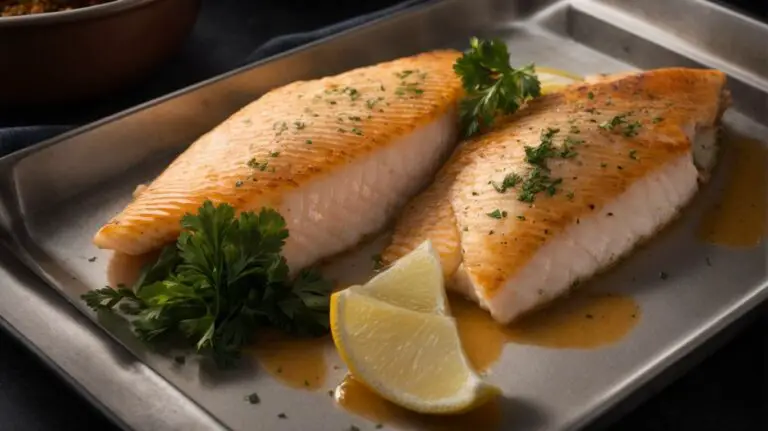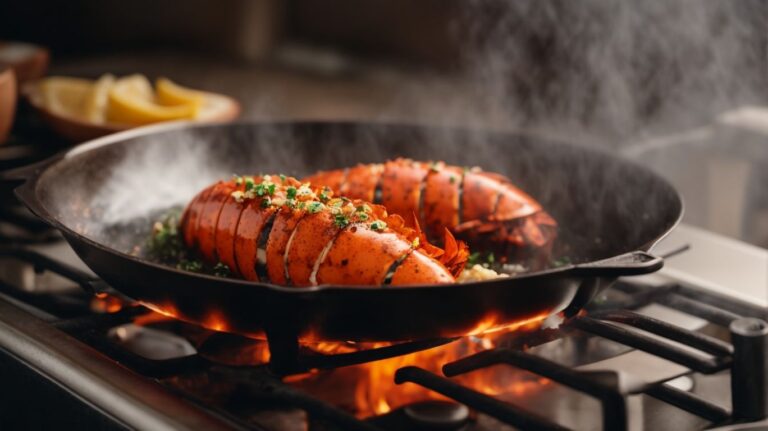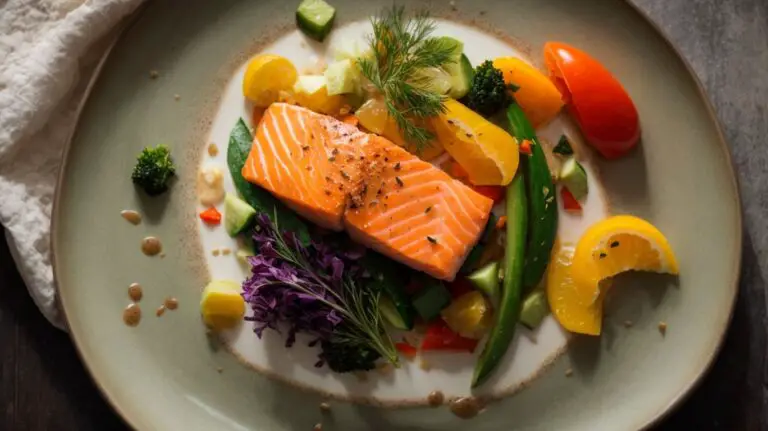How to Cook Vegetables on Blackstone?
Are you looking to elevate your vegetable cooking game? Look no further than using a Blackstone Griddle!
In this article, we will explore the reasons why a Blackstone Griddle is the perfect tool for cooking vegetables, the types of vegetables you can cook on it, how to prepare your veggies for griddling, different cooking techniques to try, and some helpful tips and tricks to ensure your vegetable dishes turn out perfectly.
Join me, Chris Poormet, as we dive into the world of cooking vegetables on a Blackstone Griddle!
Key Takeaways:
Why Use a Blackstone Griddle for Cooking Vegetables?
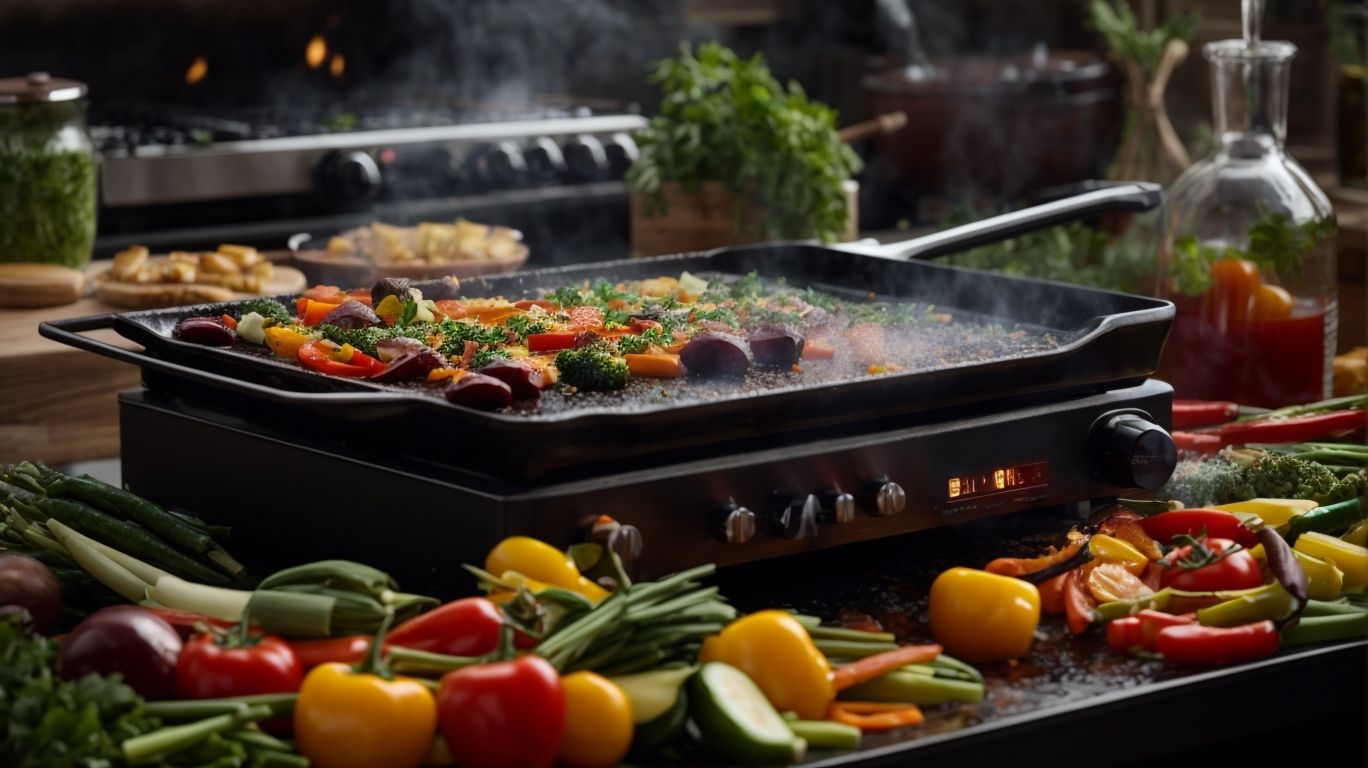
Credits: Poormet.Com – Walter Allen
Utilizing a Blackstone grill for vegetable preparation offers consistent high heat distribution, ensuring even cooking and optimal flavor retention.
Blackstone grills are renowned for their ability to sear vegetables quickly, creating a beautiful caramelization on the surface while keeping the interior tender. The evenly distributed heat prevents overcooking or undercooking, resulting in perfectly cooked vegetables every time.
This heat control is crucial, especially when working with a variety of vegetables with different cooking times and textures. Blackstone grills excel in providing this control, allowing you to achieve a harmonious mix of flavors and textures in your vegetable dishes.
Even Heat Distribution
One of the key reasons to choose a Blackstone griddle for vegetable cooking is its exceptional ability to provide consistent high heat across the entire surface.
When cooking vegetables, achieving even heat distribution is crucial to ensure that each piece cooks uniformly, enhancing the flavors and textures. The consistent high heat offered by a Blackstone grill helps in precisely this aspect, allowing the vegetables to sear quickly and retain their natural juices and nutrients.
This feature results in perfectly cooked vegetables with a delightful char and tenderness. The ability of a Blackstone griddle to maintain a steady and uniform temperature prevents hot spots that may lead to unevenly cooked veggies. As a result, your grilled vegetables will come out flavorful, beautifully colored, and with just the right amount of crispiness.
Large Cooking Surface
Another advantage of using a Blackstone griddle is its spacious cooking surface, allowing you to cook a variety of vegetables simultaneously.
With a generously sized cooking area on a Blackstone griddle, you can sauté bell peppers, roast asparagus, and grill zucchini all at once, saving time and energy. The ample space eliminates the need to cook veggies in batches, ensuring each vegetable retains its unique flavor profile.
Efficiency is further enhanced as you can easily maneuver the vegetables around the surface, adjusting heat levels as needed to achieve perfect caramelization and tenderness. Whether you are preparing a quick side dish or a colorful medley, the expansive cooking space of a Blackstone griddle offers unparalleled versatility.
Versatility
The Blackstone griddle’s versatility extends to cooking various vegetables, making it a convenient and adaptable tool for culinary enthusiasts.
With its spacious cooking surface and adjustable heat controls, the Blackstone grill effortlessly accommodates a wide array of vegetables, from bell peppers and zucchinis to portobello mushrooms and asparagus spears. Grilling vegetables on a Blackstone adds a unique smoky flavor while preserving their natural textures and nutrients, making it a favorite among health-conscious individuals. The even heat distribution ensures that each vegetable is cooked to perfection, whether you prefer them charred for a smoky flavor or lightly seared for a crisp bite.
What Vegetables Can You Cook on a Blackstone Griddle?
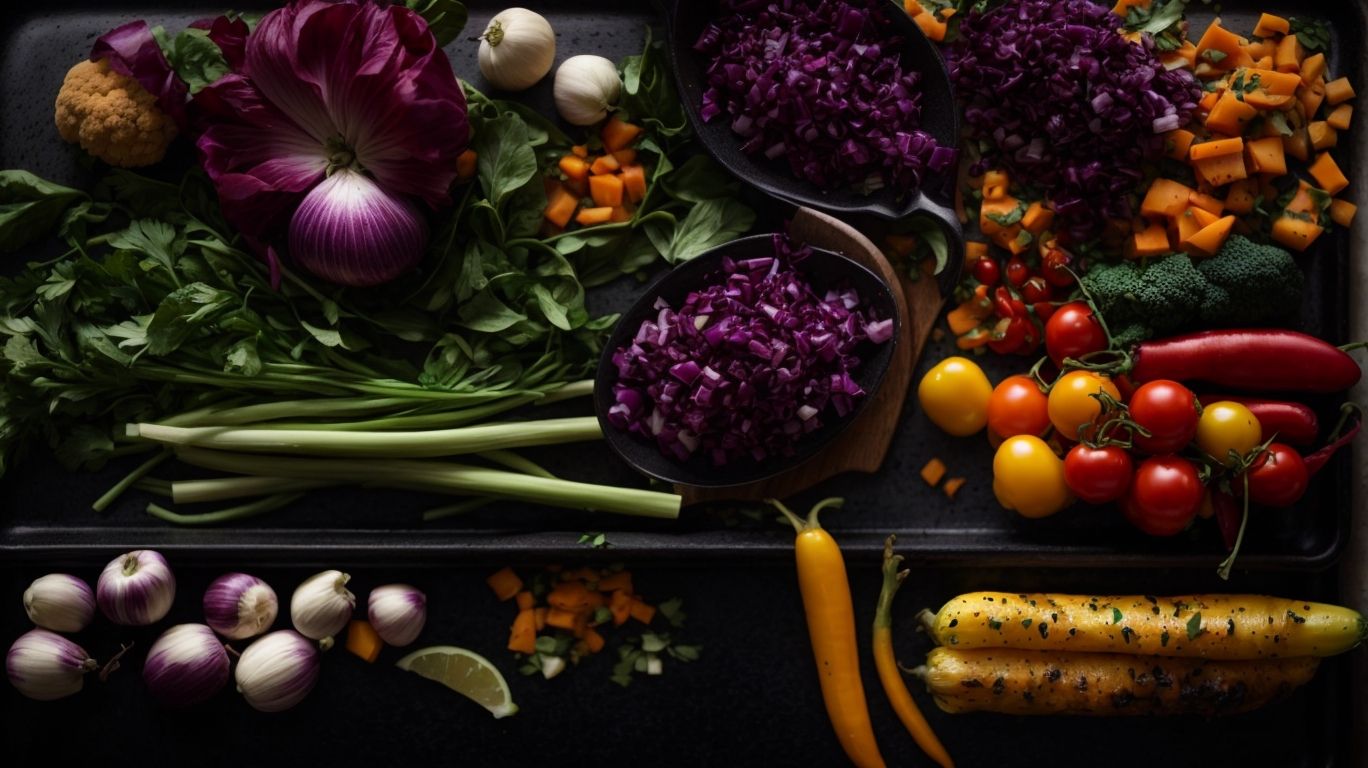
Credits: Poormet.Com – Ronald Torres
Cooking vegetables on a Blackstone griddle offers a delightful culinary experience, with options ranging from vibrant bell peppers and zucchini to earthy mushrooms and onions.
In terms of griddling on a Blackstone grill, the sky is the limit in terms of vegetable variety. You can sizzle up asparagus spears for a tender-crisp texture or char broccoli florets for that smoky flavor. For a touch of sweetness, try caramelizing corn kernels or grilling chunks of sweet potatoes. The versatility of the Blackstone griddle allows you to experiment with different vegetables, from delicate cherry tomatoes to hearty brussels sprouts, all infused with that distinct griddled taste.
Root Vegetables
Root vegetables, including potatoes and carrots, are excellent choices for cooking on a Blackstone griddle due to their hearty textures and rich flavors.
When griddled, potatoes develop a crispy exterior and a fluffy interior, making them a versatile ingredient that pairs well with various seasonings. On the other hand, carrots add a touch of sweetness and a slight crunch when cooked on the griddle, enhancing their natural sugars. Additionally, root vegetables such as beets and radishes can also be grilled on a Blackstone, offering a unique earthy taste and vibrant colors to your dishes. Their ability to caramelize beautifully on the griddle creates a delightful contrast in both texture and flavor.
Leafy Greens
Leafy greens such as spinach and kale can be quickly and deliciously prepared on a Blackstone griddle, retaining their vibrant colors and nutrients.
Cooking leafy greens on a Blackstone griddle offers a myriad of benefits. The high, even heat distribution of the griddle helps in maintaining the vibrant green color of the vegetables, making them visually appetizing.
The quick cooking time on a griddle ensures that the nutrient content of spinach and kale remains intact, providing you with a powerhouse of vitamins and minerals.
The simplicity of griddling leafy greens eliminates the need for excessive oil, resulting in a healthier cooking method. Blackstone griddles are perfect for creating a delicious char on the greens, enhancing the flavor profile and adding a delightful crunch.
Cruciferous Vegetables
Cruciferous vegetables such as broccoli and cauliflower shine on a Blackstone griddle, offering a perfect blend of charred edges and tender interiors.
When griddled on a Blackstone, broccoli and cauliflower undergo a delightful transformation. The high heat from the griddle creates crispy, caramelized edges that add a satisfying crunch to the dish, while the interiors remain soft and flavorful. This contrast in textures elevates the overall dining experience, making every bite a delightful adventure. The flavors of these vegetables intensify as they cook on the grill, developing a smoky depth that complements their natural earthy notes.
Nightshade Vegetables
Nightshade vegetables such as eggplant shine when cooked on a Blackstone griddle, offering a smoky flavor and delightful texture.
One of the unique characteristics of eggplant is how it transforms when exposed to the high heat of a Blackstone griddle – it develops a charred exterior that enhances its natural sweetness, creating a depth of flavor that is truly unmatched. The sizzling sound as the eggplant hits the hot surface, followed by the aromatic release of its rich juices, adds to the overall culinary experience.
Pairing this vegetable with other nightshades like tomatoes or bell peppers on the griddle can result in a medley of flavors that harmonize beautifully. The versatility of a Blackstone grill allows for endless variations in seasoning and accompaniments, making each dish a unique creation.
Preparing Vegetables for Cooking on a Blackstone Griddle
Before sizzling your vegetables on a Blackstone griddle, proper preparation is key, starting from cleaning and cutting to marinating for enhanced flavor.
In terms of cleaning your vegetables, make sure to wash them thoroughly under running water to remove any dirt or residues. For cutting, ensure uniform pieces to promote even cooking and easier handling on the griddle surface. Consider marinating your vegetables in a blend of olive oil, herbs, and seasonings to infuse them with delicious flavors.
Properly prepared vegetables not only taste better but also prevent sticking on the grill and help retain their natural moisture, ensuring a crisp and juicy outcome that pairs perfectly with the smoky char from the Blackstone griddle.
Cleaning and Peeling
Cleaning and peeling vegetables before griddling on a Blackstone grill ensures optimum hygiene and removes any unwanted residues, promoting a safe and flavorful cooking process.
Properly washing vegetables not only eliminates dirt and pesticides but also reduces the risk of foodborne illnesses.
- In terms of peeling, some vegetables like carrots and potatoes should always be peeled to remove tough skins and potential contaminants.
- Removing the peel can enhance the texture and appearance of the dish, making it more visually appealing.
Cutting and Slicing
Mastering the art of cutting and slicing vegetables for your Blackstone griddle adventures is essential for achieving uniform cooking and visual appeal in your dishes.
Proper cutting techniques ensure that vegetables cook evenly, preventing some pieces from being undercooked while others are overdone. This attention to detail can make a significant difference in the final taste and texture of your dishes. By meticulously slicing your vegetables, you also enhance the visual presentation, creating a feast for the eyes as well as the taste buds.
Different vegetables require specific cutting styles to suit their unique characteristics. For example, firm vegetables like carrots benefit from a julienne cut, while delicate produce such as tomatoes are better suited for a thin slice. Understanding the optimal cutting style for each vegetable will elevate your culinary skills and overall grilling experience with your beloved Blackstone grill.
Marinating or Seasoning
Enhance the flavors of your vegetables on a Blackstone griddle by marinating or seasoning them with aromatic herbs, spices, and savory sauces.
Marinating or seasoning your vegetables before griddling not only infuses them with rich, bold flavors but also helps to tenderize them, resulting in a more succulent and enjoyable texture.
Marinating allows the vegetables to soak up the flavors over time, while using a dry rub method coats them in a blend of spices for a delicious crust when cooked.
Popular marinades for vegetables include blends with olive oil, balsamic vinegar, garlic, and herbs, embracing Mediterranean influence.
Cooking Techniques for Vegetables on a Blackstone Griddle
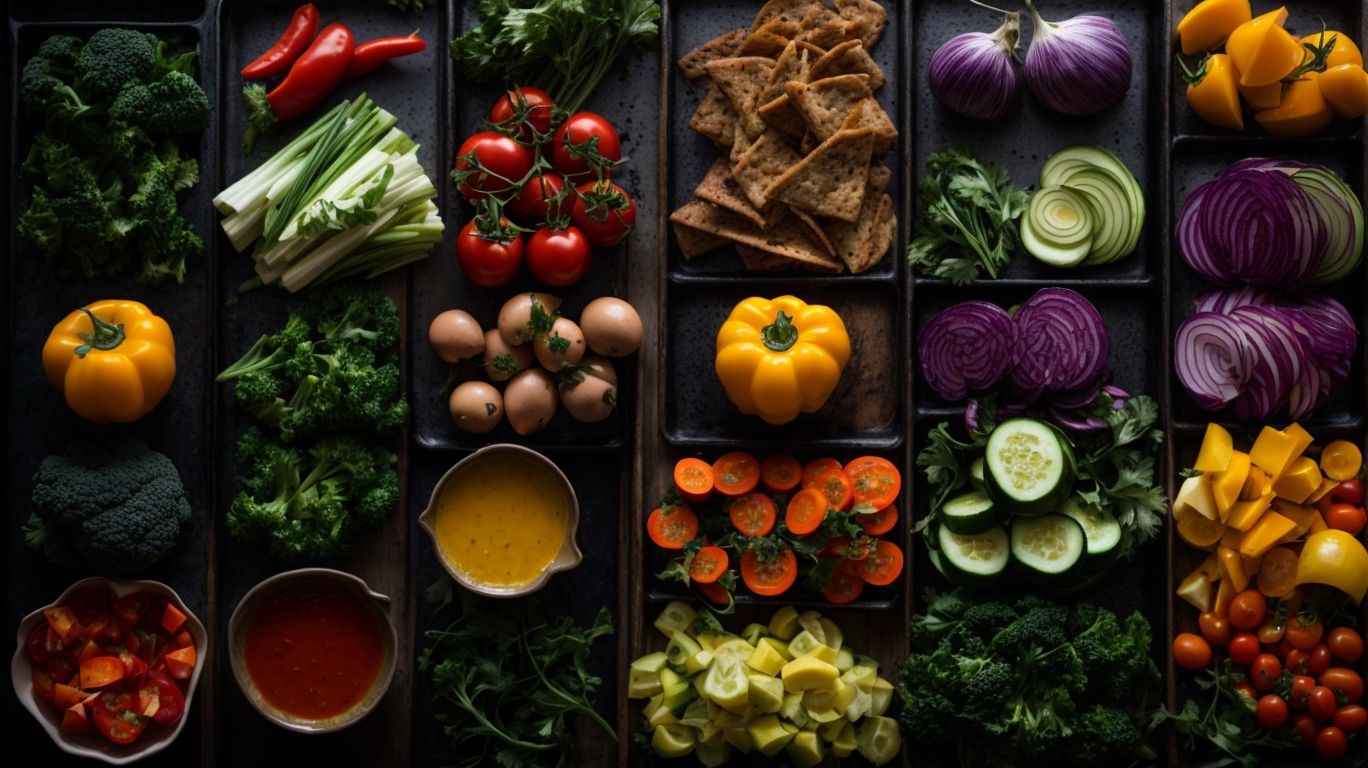
Credits: Poormet.Com – Arthur Davis
Mastering various cooking techniques on a Blackstone griddle can elevate your vegetable dishes, from sizzling grilling to savory stir-frying, using direct or indirect heat methods.
Grilling vegetables on a Blackstone griddle imparts a delicious smoky char and caramelization, enhancing their natural sweetness. This high-heat method cooks veggies quickly, giving them a nice sear while retaining a tender crunch.
On the other hand, stir-frying vegetables on the flat top allows for rapid cooking with vibrant colors and flavors, perfect for creating Asian-inspired dishes.
Direct heat cooking works well for smaller, evenly-sized vegetables, while indirect heat is ideal for larger cuts that need longer cooking times, preserving moisture and tenderness in each bite.
Experimenting with these techniques will unlock a world of culinary possibilities on your Blackstone griddle.
Direct Heat Cooking
Direct heat cooking on a Blackstone griddle allows vegetables to develop caramelized grill marks and intense flavors, creating a delightful charred essence in each bite.
When using direct heat on a Blackstone grill, the high temperature sears the vegetables quickly, locking in their natural juices and nutrients, while still maintaining a satisfying crunch. The direct contact with the hot griddle surface results in beautifully defined grill marks that not only enhance the visual appeal of the dish but also provide a tantalizing smoky flavor that complements the inherent sweetness of many vegetables.
Indirect Heat Cooking
Indirect heat cooking on a Blackstone griddle offers a gentle and consistent method to cook vegetables thoroughly, preserving their natural juices and flavors.
When using indirect heat on a Blackstone grill, the heat source is placed away from the food, allowing for a slower and more even cooking process. This method is ideal for vegetables that require thorough cooking without burning the exterior. The indirect heat helps to avoid flare-ups and charring, resulting in perfectly cooked vegetables with retained nutrients. By utilizing this technique, vegetables maintain their texture and color while enhancing their natural sweetness and flavor profiles. The Blackstone grill’s design and heat distribution system further support this cooking method, ensuring that the vegetables are evenly cooked throughout.
Stir-frying or Sautéing
Stir-frying or sautéing vegetables on a Blackstone griddle provides quick and flavorful results, allowing the veggies to retain their crisp textures and vibrant colors.
One key advantage of using a Blackstone grill for stir-frying or sautéing vegetables is the even heat distribution across the flat cooking surface, ensuring that each vegetable piece cooks consistently. The high temperatures achieved on the griddle surface help to sear the vegetables quickly, locking in their natural juices and flavors.
Whether you are cooking bell peppers, broccoli, or zucchini, the griddle’s ample surface area allows you to spread out the vegetables evenly, preventing overcrowding and ensuring that they cook quickly and uniformly. The efficient cooking process on a Blackstone grill also helps to preserve the nutritional value of the vegetables, as they are cooked rapidly, minimizing nutrient loss.
Grilling
Grilling vegetables on a Blackstone griddle imparts a delightful smoky essence and distinct grill marks, enhancing the overall visual appeal and flavor profile of the dishes.
When setting out to grill vegetables on a Blackstone griddle, it’s essential to prep your veggies properly to ensure optimal results. Ensure that your vegetables are cut into uniform sizes to promote even cooking and to maximize the contact surface with the grill, enabling those coveted grill marks to form. Brushing the vegetables lightly with oil beforehand not only prevents sticking but also aids in developing that delicious charred flavor.
Tips and Tricks for Cooking Vegetables on a Blackstone Griddle
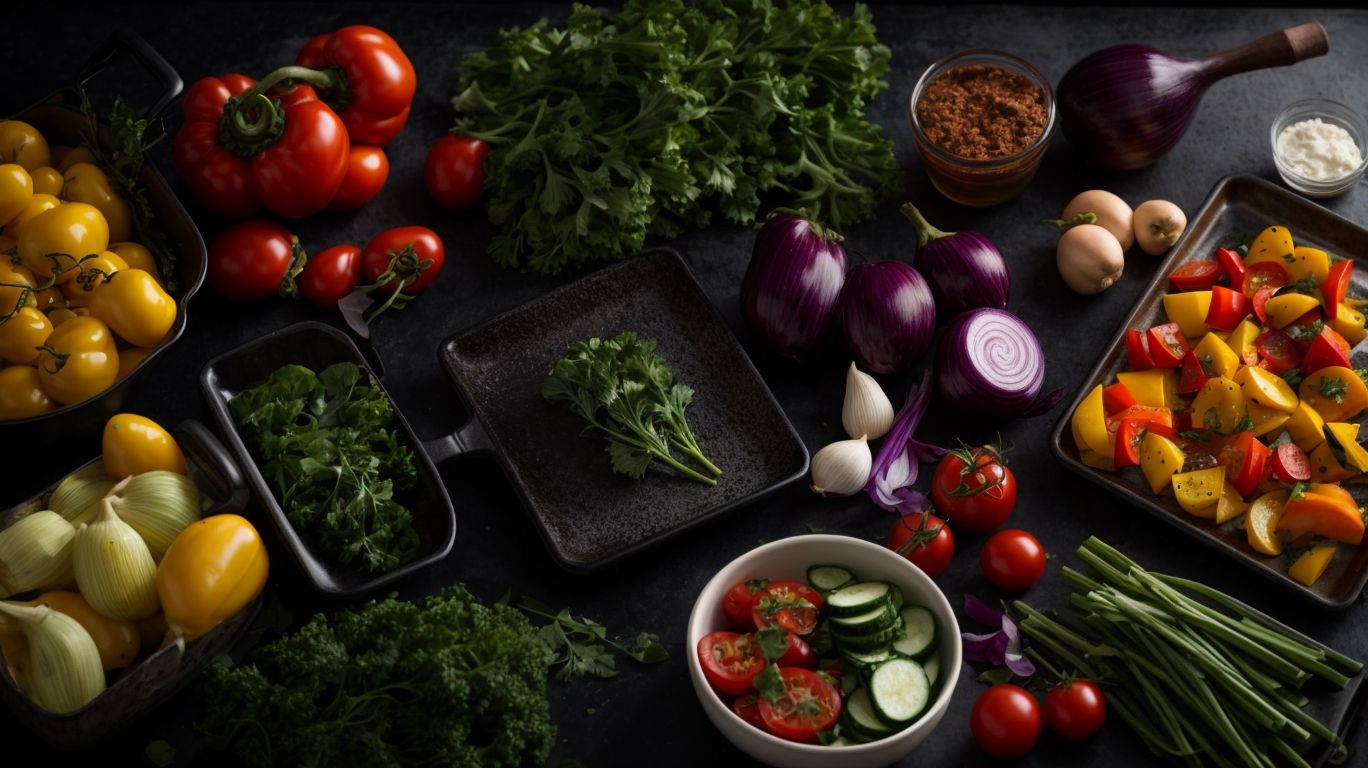
Credits: Poormet.Com – Eugene Young
Optimize your vegetable cooking experience on a Blackstone griddle with expert tips, from preheating the surface to mastering the art of oiling, seasoning, and controlling cooking temperatures.
One vital aspect to consider when cooking vegetables on a Blackstone griddle is preheating. Ensuring the griddle is adequately preheated helps achieve that perfect sear and caramelization on your veggies. Before adding any vegetables, let the griddle heat up properly, allowing for even cooking and optimal flavor development.
In terms of oiling, opt for high-heat oils like avocado or canola that can withstand the temperatures of a griddle. Applying a thin, even layer of oil helps prevent sticking and promotes a beautiful char on the vegetables.
Seasoning your vegetables is a crucial step in enhancing their taste profile. Experiment with various seasonings like garlic powder, paprika, or Blackstone seasoning blends to elevate the flavors of your veggies.
Preheat the Griddle
Preheating your Blackstone griddle ensures optimal cooking conditions for vegetables, allowing for efficient heat transfer and flavor development.
When you preheat your griddle, you ensure that the entire surface reaches the desired cooking temperature uniformly, which is crucial for cooking vegetables evenly. This also helps in reducing the chances of hot spots, ensuring that all your veggies are cooked to perfection.
Proper preheating of the Blackstone griddle ensures that the heat is evenly distributed across the surface, providing a consistent cooking environment. This leads to better caramelization of vegetables, enhancing their flavors and textures for a delightful culinary experience.
Use Oil or Butter
Employing the right amount of oil or butter on the Blackstone griddle ensures a flavorful and non-stick cooking experience for the vegetables, enhancing both taste and texture.
In terms of utilizing oil or butter on your Blackstone griddle, the key lies in selecting high-quality fats that complement the natural flavors of the vegetables. **Olive oil, avocado oil, or ghee** are excellent choices due to their high smoke points and rich flavors.
To properly oil the griddle, preheat it to the desired temperature and then **apply a thin layer** of oil or butter using a brush or paper towel. This thin coating not only prevents the vegetables from sticking but also helps in achieving a nice sear.
Experimenting with different oils can add unique flavors to your vegetable dishes, making them more enticing to your taste buds. Remember, the right oiling technique can truly elevate the overall cooking experience on a Blackstone griddle.
Seasoning and Flavoring
Seasoning and flavoring your vegetables on a Blackstone griddle with aromatic herbs, spices, and savory sauces add depth and complexity to your culinary creations, enticing the palate with every bite.
The choice of seasonings can truly transform the taste of your vegetables, elevating them from ordinary to extraordinary. For a touch of freshness and brightness, consider using lemon zest and fresh parsley on grilled veggies. If you prefer smoky flavors, a sprinkle of paprika or a dash of chipotle powder can do wonders. Garlic butter is a classic addition that complements most vegetables beautifully.
Timing and Temperature
Mastering the art of timing and temperature control on your Blackstone griddle is key to achieving perfectly cooked vegetables with optimal texture and flavor.
When cooking vegetables on a Blackstone griddle, the right timing ensures that they are neither overcooked nor undercooked, striking that delicate balance for the best results. Temperature control is equally crucial to guarantee even cooking and prevent burning or mushy textures in your veggies. With the precision that a Blackstone grill offers, you have the power to tailor the cooking process to each vegetable’s unique requirements, unleashing their natural flavors and preserving their nutrients. Whether you’re searing peppers, caramelizing onions, or grilling asparagus, understanding how time and heat work together is fundamental for culinary success.
Frequently Asked Questions
How to Cook Vegetables on Blackstone?
As a former chef and food blogger, I’ve had my fair share of experimenting with different cooking methods. Here are some FAQs on how to cook vegetables on Blackstone that I’ve encountered:
What type of vegetables can I cook on a Blackstone?
You can cook a variety of vegetables on a Blackstone, including bell peppers, zucchini, onions, mushrooms, asparagus, and more. The high heat and even cooking surface of a Blackstone make it perfect for grilling vegetables.
Do I need to preheat the Blackstone before cooking vegetables?
Yes, it’s essential to preheat your Blackstone before cooking vegetables. Preheating ensures that the cooking surface is hot enough to sear the vegetables and prevent sticking. I recommend preheating for at least 10 minutes on high heat.
Can I use oil when cooking vegetables on a Blackstone?
Yes, you can use oil when cooking vegetables on a Blackstone. It’s best to use a high smoke point oil like avocado oil or grapeseed oil. Drizzle the oil on the vegetable and spread it evenly before placing them on the Blackstone.
How do I prevent my vegetables from sticking to the Blackstone?
To prevent your vegetables from sticking to the Blackstone, make sure to preheat the surface and use oil. You can also use a non-stick cooking spray or cook the vegetables on a piece of foil. Be careful not to overcrowd the cooking surface, as this can also cause sticking.
How long does it take to cook vegetables on a Blackstone?
The cooking time for vegetables on a Blackstone will vary depending on the type and size of the vegetable. Generally, it takes 5-10 minutes to cook most vegetables on a Blackstone. Make sure to check and flip the vegetables for even cooking.
Can I use marinades or seasonings when cooking vegetables on a Blackstone?
Yes, you can use marinades or seasonings when cooking vegetables on a Blackstone. However, be careful not to use too much, as the high heat may cause them to burn quickly. It’s best to add them towards the end of the cooking process or use a spray bottle to lightly coat the vegetables while cooking.

